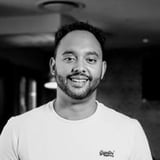Summary
When we talk about DesignOps, the focus is frequently on scaling existing design systems and supporting established design teams. But the U.S. Digital Service’s Dan Willis will tell a different kind of story about a federal agency that used DesignOps practices to address a multi-million-dollar business problem. With years of system-centric development, the agency had accidentally opened a giant void between the functionality of their enterprise software and the people who depended on that functionality to do their jobs. This talk will explore how to introduce and maintain design operations even where none have existed before.
Key Insights
-
•
Design operations cannot be implemented 'off the shelf'; different organizational contexts require tailored approaches.
-
•
Startups offer the ideal opportunity to build design ops infrastructure simultaneously with organizational structure, but this is rare.
-
•
Introducing design ops into organizations without prior design processes often requires rebuilding the entire product development system.
-
•
A massive gap can exist between system functionality delivered and actual user needs, especially in legacy or bureaucratic systems.
-
•
Large budgets and many developers do not guarantee successful user-centered solutions if design expertise is absent.
-
•
Pattern libraries and design tools can fail without appropriate contract structures and organizational incentives.
-
•
User involvement cannot be delegated solely to subject matter experts; direct user engagement is crucial and non-negotiable.
-
•
Lowering expectations and embracing flexibility and resilience in plans increases chances of incremental but meaningful progress.
-
•
To solve deep systemic problems, teams must consider the wider ecosystem and organizational politics, not just localized issues.
-
•
Even when projects end prematurely, establishing a user-centered design culture leaves lasting, irreversible changes in language and mindset.
Notable Quotes
"It’s not like you can go down to the corner store, pick out the right brand of design ops, and sprinkle it everywhere."
"The only time you get to build design ops at the same time as the organization structure is like in startups, but they’re so chaotic you don’t get to enjoy it."
"They had accidentally created a gaping void between the functionality they were producing and the needs of the people who depended on it."
"They thought if we build system functionality and send people to training, it will just work. Spoiler: it didn’t."
"They paid a vendor $800 million and launched a single form online, which is no longer in use."
"Designers wandering the halls won’t survive without a safe space made up of roles, processes, and infrastructure."
"Selling an ideal solution to an organization never works. You push a good start and adapt as you go."
"You have to make the user unavoidable in every conversation and decision."
"The user directorate’s revolt shutting down new development for a year was unprecedented and opened the door for ambitious change."
"Once people have seen the value of involving users and design, they can’t unsee it—no matter the churn or setbacks."
Or choose a question:
















More Videos

"Research ops was actually there before research at TravelPerk, supporting designers first."
Ned Dwyer Emily Stewart James WallisThe Intersection of Design and ResearchOps
September 24, 2024

"Design Ops in government requires a lot of diplomacy – it’s about managing relationships and stakeholder expectations."
Michael LandEstablishing Design Operations in Government
February 18, 2021

"The first organization to solve accessibility for new modalities like AR/VR will gain a massive, lasting advantage."
Sam ProulxTo Boldly Go: The New Frontiers of Accessibility
November 18, 2022

"The UX academy gave non-designers 20% of their time to learn and practice user experience methods."
Vasileios XanthopoulosA Top-Down and Bottom-Up Approach to User-Centric Maturity at Scale
January 8, 2024

"A thousand paper cuts add up: many small frustrations can lead to someone leaving your digital experience."
Andrew Custage Michael MallettThe Digital Journey: Research on Consumer Frustration and Loyalty
March 29, 2023

"We had one researcher for every 10 designers, sometimes even one for every 15."
Marjorie Stainback Kelsey KingmanTransforming Strategic Research Capacity through Democratization
October 24, 2019

"Connection is the energy that exists between people when they feel seen, heard, and valued."
Alla WeinbergCross-Functional Relationship Design
December 6, 2022

"Focus your research report on the three most influential stakeholders, not everyone."
Jerome “Axle” BrownHow to Use Self-Directed Learning to Ensure Your Research Insights are Heard and Acted Upon
March 11, 2021

"If you want to have tattoos, you can have tattoos and show them."
Jen Crim Jess Quittner Saritha Kattekola Alex Karr Gurbani PahwaCulture, DIBS & Recruiting
June 11, 2021
















